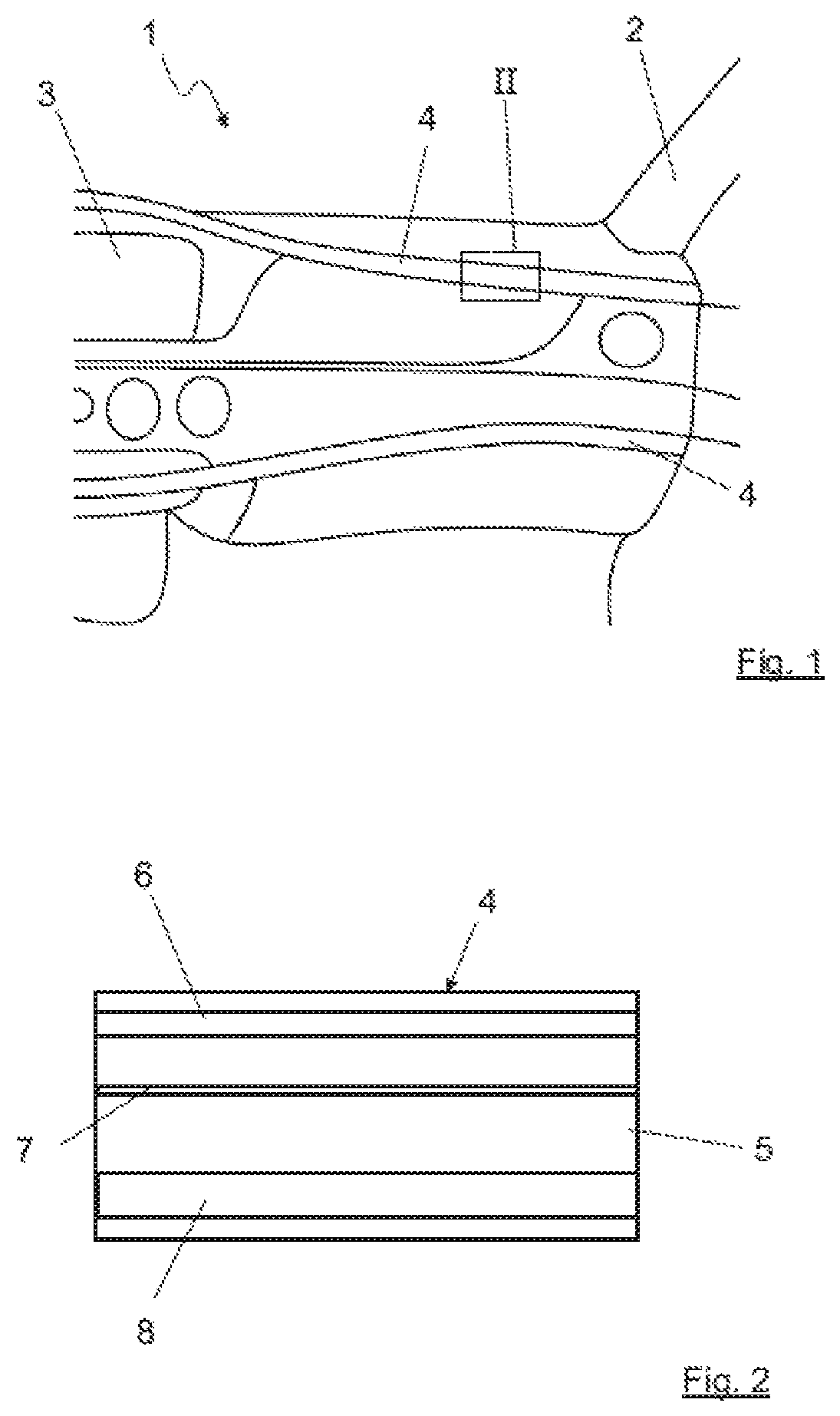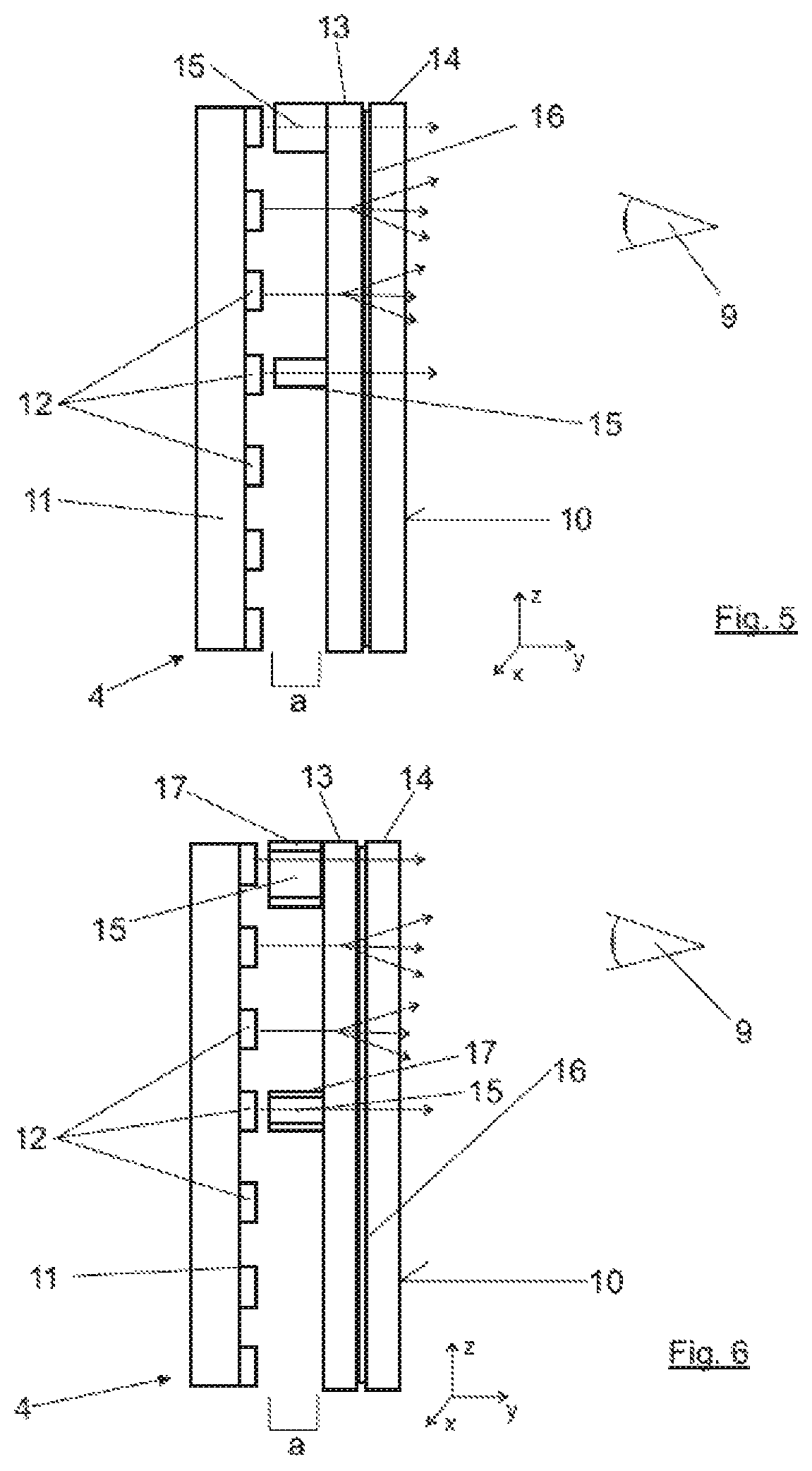Illuminated decorative part
a technology for decorative parts and lighting, applied in interior lighting, dashboard lighting devices, transportation and packaging, etc., can solve the problems of limiting the optical brilliance that can be achieved with the decorative lighting unit according to the generic prior, requiring a relatively large design, and reducing the chance of light loss, etc., to achieve the effect of simple production, reduced chance, and compact construction
- Summary
- Abstract
- Description
- Claims
- Application Information
AI Technical Summary
Benefits of technology
Problems solved by technology
Method used
Image
Examples
Embodiment Construction
[0024]A section of a dashboard 1 of a vehicle, which is not shown in its entirety, can be discerned in the drawing in FIG. 1. This section substantially shows the region of the dashboard 1 in front of the so-called passenger seat between an exemplarily shown A-pillar 2 of the vehicle and a display 3, which can be discerned on the left edge of the image and which should be a part of the central console of the vehicle. Two exemplary illuminated decorative parts are arranged in the vicinity of the dashboard, each of which is identified with 4 and which are configured here as continuous decorative stripes running through the vehicle dashboard 1 transverse to the driving direction. These illuminated decorative parts 4, the structural details of whose design will be discussed later, are typically configured with a flat and thus lightly curved surface, which is normally convexly curved toward the observer. For the sake of simplification, the discussion that follows is of a flat surface, ev...
PUM
| Property | Measurement | Unit |
|---|---|---|
| transparent | aaaaa | aaaaa |
| translucent | aaaaa | aaaaa |
| non-transparent | aaaaa | aaaaa |
Abstract
Description
Claims
Application Information
 Login to View More
Login to View More - R&D
- Intellectual Property
- Life Sciences
- Materials
- Tech Scout
- Unparalleled Data Quality
- Higher Quality Content
- 60% Fewer Hallucinations
Browse by: Latest US Patents, China's latest patents, Technical Efficacy Thesaurus, Application Domain, Technology Topic, Popular Technical Reports.
© 2025 PatSnap. All rights reserved.Legal|Privacy policy|Modern Slavery Act Transparency Statement|Sitemap|About US| Contact US: help@patsnap.com



